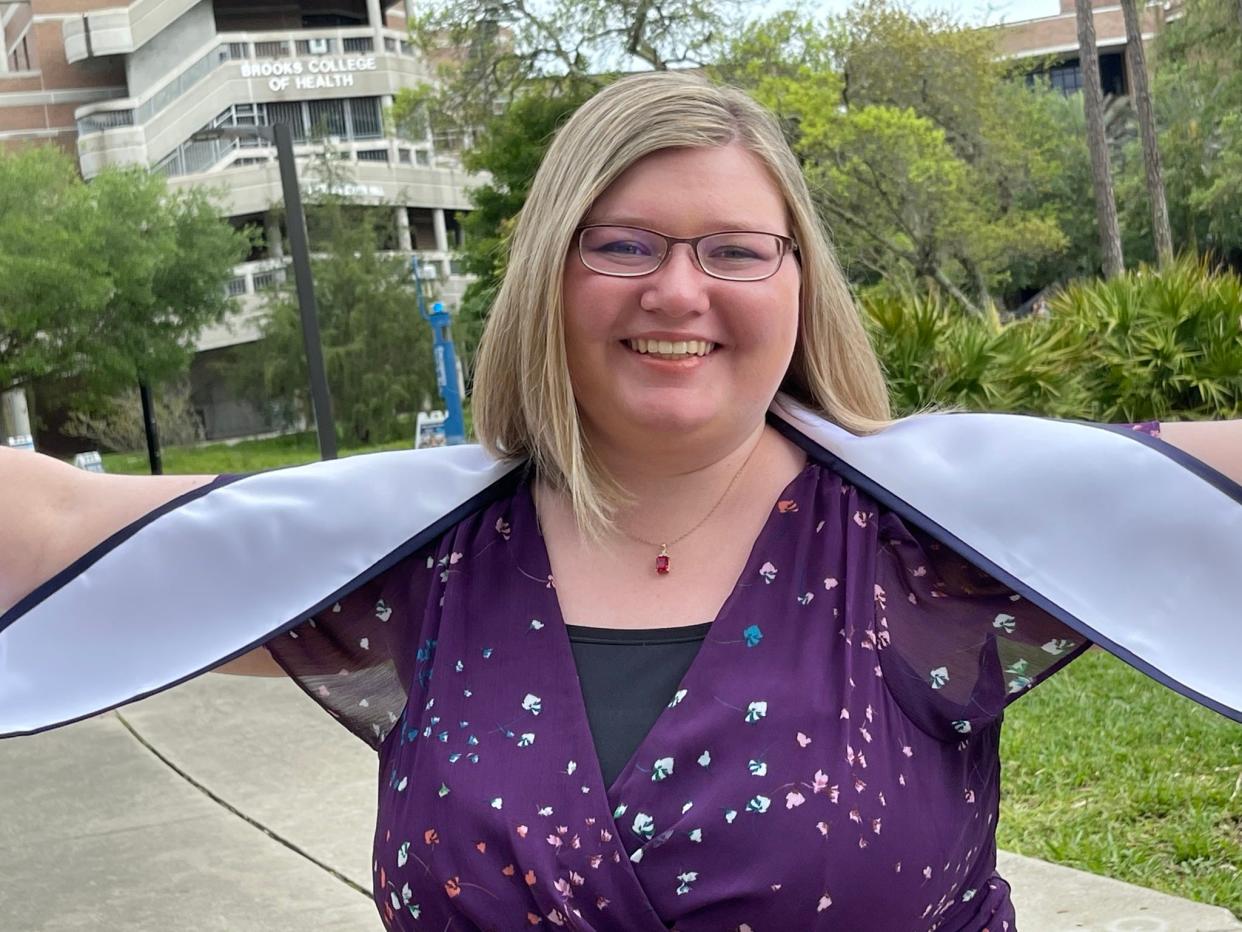Health care advocate: Having a blood clot prevention plan could save your life

Asking your health care provider a simple question — “What is my blood clot prevention plan?” — could save your life. It might have saved my daughter’s life.
Last October our daughter Emily Adkins (an otherwise healthy 23-year-old) tragically lost her life due to a pulmonary embolism stemming from a preventable blood clot in her leg. Emily's sudden passing left us devastated and searching for answers.
This led us to establish Emily’s Promise to share her story, honor her life and shed light on the urgent need for increased awareness about blood clots to help reduce the number of lives lost to this preventable complication. The need to heighten focus on blood clot risk is great. A recent survey revealed that only 1 in 4 Floridians who carried a risk factor for blood clots had a conversation with their health care provider about how to manage it.
Our personal tragedy began on Aug. 15, 2022, when Emily went to the emergency room with an acute gallbladder condition that required emergency surgery. She was fine to return to work within a few weeks, until she slipped on a freshly washed floor and injured her right ankle. She went to the Mayo Clinic in Jacksonville a few days later and learned she had broken her ankle.
During a follow-up appointment on Oct. 13, her cast was removed. She was given instructions to stay off the ankle and do exercises to strengthen it. But she was not assessed for blood clot risks — no ultrasound or D-dimer test was conducted to identify the possibility of a blood clot. For Emily, that proved fatal.
Letters: Can prayer reduce crime and hate in Jacksonville? It certainly couldn't hurt.
Eight days later, I got a life-altering phone call from my wife: “Come quick, something is wrong with Emily.” An EMT found a heartbeat and when we arrived at the hospital, we learned that our Emily had suffered cardiac arrest. Shortly after, her doctor came into the room and started to shake his head.
We were escorted to our daughter’s side as the compression machine continued its work. We desperately asked them to do all they could to save our precious angel, but after failing on several attempts to detect a pulse, the doctor finally ordered discontinuation. We were paralyzed with shock.
We are still questioning how with today’s medical advances a young woman like Emily could fall victim to a fatal blood clot. We decided to channel our grief into positive action. As a result, the Emily Adkins Prevention Act was filed in the Florida Legislature.
On June 5, after months of advocacy by me and my wife, Janet, Gov. Ron DeSantis signed the bill into law. During a time of so much political division, it was stunning to see 83 state legislators co-sponsor this bill. Blood clot prevention is clearly a bipartisan issue that we all can get behind.
We were shocked at how many young people came to us after each committee meeting to share their own blood clot story. Even Gov. DeSantis understood the urgency from personal experience — his sister Christina, age 30, died from a pulmonary embolism stemming from a blood clot in 2015.
Dear cancer: A Jacksonville Beach couple pens a letter to the disease their child battled for years
The Emily Adkins Prevention Act establishes a policy work group to gather data and issue recommendations on how the state can improve its efforts concerning blood clots. This work group's main goal is to understand why so many preventable deaths due to blood clots go undetected and how we can fix this once and for all.
A vast spectrum of Floridians stands to benefit from their work: Our survey found that about 3 out of 4 Floridians have had at least one medical experience that put them at greater risk of a blood clot or pulmonary embolism — including surgery, long-term bed rest, pregnancy, hormone therapy or birth control, intravenous catheters or broken bones.
Nothing will bring back our precious daughter or fill the hole in our hearts. But we can honor Emily’s legacy by using her story to educate others — patients as well as health care providers ― and save lives.
“What is my blood clot prevention plan?” If your doctor doesn’t initiate the conversation, ask the question and insist on answers.

Douglas Adkins is CEO of Emily’s Promise, a family foundation dedicated to the memory of his daughter. The foundation’s goal is to raise awareness of blood clot risk factors and the importance of asking health care providers, #whatismybloodclotpreventionplan. Determine your blood clot risk at CapriniRiskScore.org.
This guest column is the opinion of the author and does not necessarily represent the views of the Times-Union. We welcome a diversity of opinions.
This article originally appeared on Florida Times-Union: More patients at risk for blood clots must make a prevention plan

